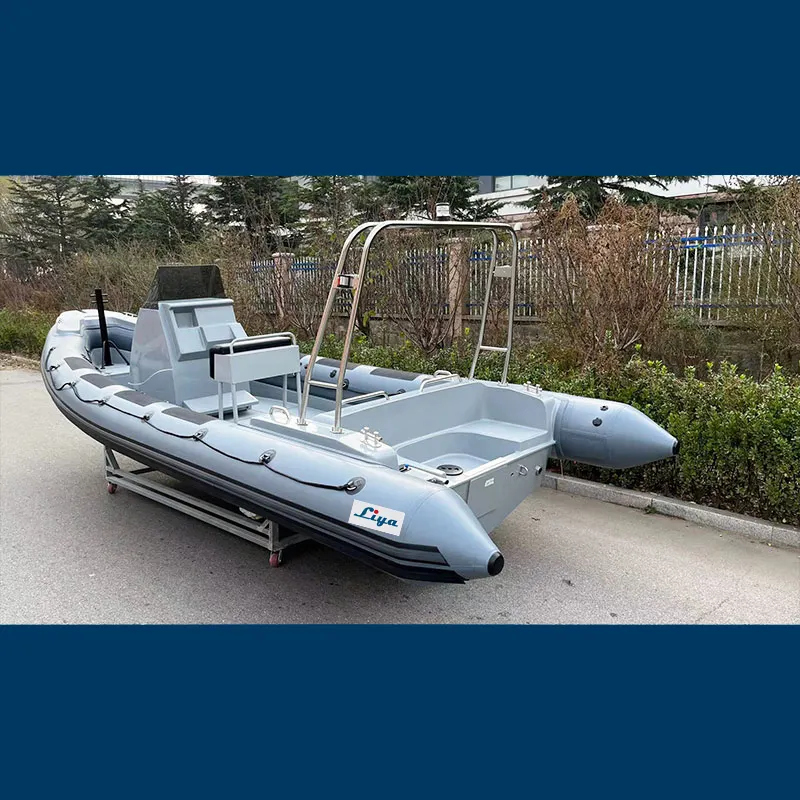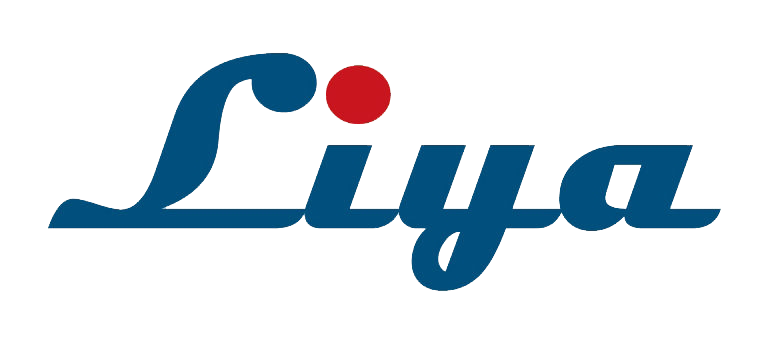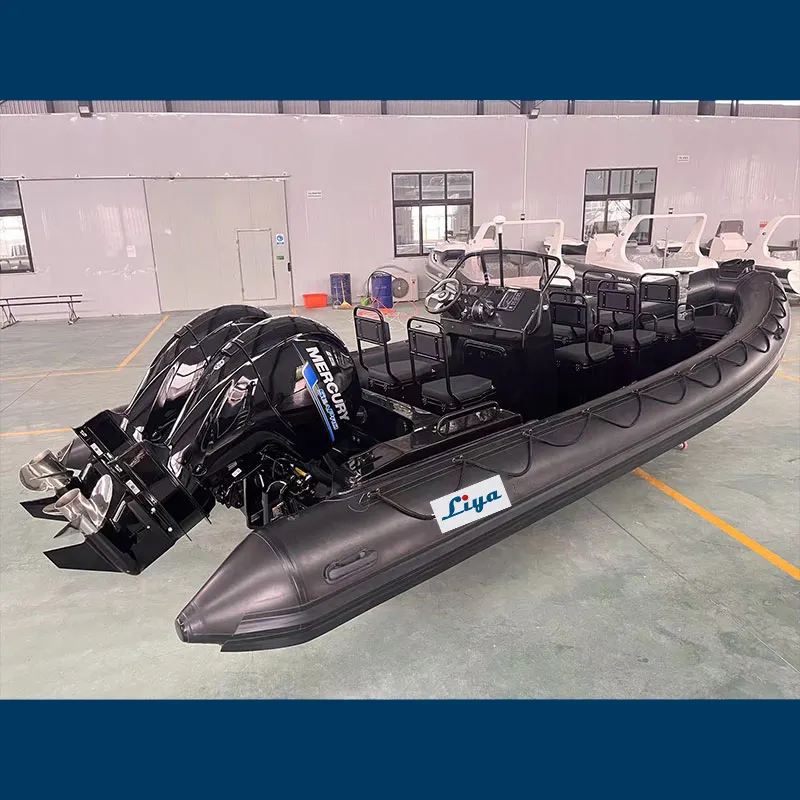Military-Grade Construction of Navy RHIBs
Composite Material Innovation in Hull Design
Modern Navy RHIB hulls are now made of advanced glass-reinforced polymer (GRP) composites and hyper-lon reinforced fabric, resulting in reduced weight and excellent impact resistance. This technology offers 40% better structural strength than conventional aluminium, enabling to maintain performance in extreme maneuvers. The composite design also allows ballistic-rated hull integrity at more than 40 knots following ballistic hits of up to 7.62mm small arms fire, the Naval Sea Systems Command’s technical information explains. The special segmented air-tube structure absorbs wave energy effectively to reduce even Beaufort Scale 8 waves achievable.
Ballistic Protection and Extreme Weather Survival
Military RHIBs are reinforced by Kevlar in critical areas and triple-layer air chamber, which is designed to provide maximum buoyancy even if two chambers are compromised. Built to challenge 45-knot winds, these boats boast deep-V hull profiles that cut through 5 meter waves, not sit on them. Slip-resistant composite decking and fast drain scuppers are fitted to avoid water settling into the hull and hypalon tubes still look new long after inferior PVC tubes have become brittle and cracked in the sun after 3 years of use.
Low Maintenance Requirements for Prolonged Deployments
Composite design reduces or eliminates the potential for corrosion compared to metal counterparts, by removing the electrotype path found in saltwater applications. GRP materials were tested by the Naval Materials Laboratory and have proved to be 12 times more resistant to corrosion than marine-grade aluminium. Also, modular elements make in-field replacement of sections (i.e., Bow fenders) taking just 45 minutes with standard toolkits. This philosophy extends availability at sea to greater than 98% within its six-month deployment configuration, an operational efficiency that stretches funding in what has become a budget-constrained environment.
Operational Versatility Across Mission Profiles
Counter-Piracy vs. Search-and-Rescue Configuration Switching
Military RHIBs have modular deck systems for rapid mission re-tasking. Reinforced hard points facilitate, for counter-piracy missions, weapon mounts, and armor plating with which to engage and deter hostile craft. On the other hand, search-and-rescue operations need to attach medical equipment racks and immersion suits in the above-mentioned positions. This adaptation requires no dry-dock assistance and can usually be completed within two hours, with standard onboard tools. Crews practice shifting configurations during long patrols, enabling maximum utility of the platform against a range of maritime threats.
Interoperability with Carrier Groups and Submarine Platforms
NATO protocol datalinks enable RHIBs to transfer tactical data with carrier battle groups via encrypted datalinks. They relay sonobuoy feeds to submarines and receive encrypted orders from command ships during joint exercises. These little craft move people across 60-metre gaps in Sea State 4 using high-line systems. Such XY compatibility allows for carrier groups to extend their surveillance frontier in the form of RHIB flotillas and therefore alleviate strain of deployment on larger ships.
Rapid Conversion from Troop Transport to Medevac Roles
Troop carriers can be turned into medi-vacs in less than an hour, using different deck designs that are reconfigurable. Bench seats are removable to open floor spaces with readily accessible stretcher integration and IV holders that securely clip into exposed ports. Oxygen cylinders and trauma kits are stashed in waterproof storage compartments. In amphibious assaults, this flexibility allows the tempo to be maintained as the mission shifts from invasion to casualty evacuation. Medevac model maintains the speed and stability necessary to save lives as it rushes patients over to hospital ships.

Propulsion Systems Enabling Tactical Superiority
Twin Diesel vs. Waterjet Propulsion Tradeoffs
RHIBs are able to travel up to 30% farther on long-duration patrols than waterjet-propelled vessels of equivalent size without refueling, providing increased patrol ranges without having to refuel. Waterjets are nimbler than diesel above water in junk-filled waters, perform with virtually zero risk of intake fouling, and can be more maneuverable at high speeds — making a 180-degree turn in just 2.5 boat lengths. Selection is mission-driven: long-duration deployments use twin-diesel; coastal interdiction uses single-diesel and waterjet responsive. Hybrid configurations that balance efficiency with escape in multi-threat settings are suggested by defense analysts, where possible.
60-Knot Emergency Response Capabilities
Two high-torque marine turbo engines permit 0-60 knot acceleration in less than 20 seconds, a tactical requirement for personnel retrieval procedures. This velocity floor can collapse your hostile window 4x faster than the average non-frigate. For SAR, the 60-knot capability reduces the coast time for a medevac from 45 minutes to under 12 minutes. Operation tests have verified that such speed can provide hull stability against 1.5-meter waves in emergency vector change in assault formation.
Shallow Draft Performance in Littoral Zones
A propulsion set-up allows it to navigate 0.9-meter waters -- a must in riverine operations. When sandbar-heavy coastlines threaten damage to conventional propellers, waterjet systems retain more than 85% of their open-water velocity. Amphibious operations can approach the shore within 50 meters under the draft of 1.5 meters. Marine studies suggest there would be 62% fewer groundings in a littoral deployment than there were in previous models.
Integrated Navigation and Combat Systems
Navy RHIBs deploy integrated combat systems to maintain tactical superiority during maritime operations. These platforms incorporate encrypted navigation arrays and weapons interfaces essential for survivability in contested environments where adversaries employ electronic countermeasures.
Satellite-Guided Routing in GPS-Denied Environments
For jamming or spoofing of GPS signals, multi-sensor fusion results in persistent positioning. RHIBs use Stellar-Inertial Navigation Systems (SINS) with laser gyroscopes and celestial object tracking capability; providing <5m accuracy when satellite signals are unavailable. In 2023 RIMPAC maneuvers, the ships performed evasive maneuvers near enemy shores, using this technology to maintain course even during simulated GPS blackout.
Weapon System Integration via MIL-STD-1553B Databus
Inter-operability between combat systems is possible with MIL-STD-1553B avionic protocol. This military-standard databus links torpedo decoys, gunner-dominated weapons stations, and target acquisition radars through a two-way serial network. Testing shows an order of magnitude reduction in target acquisition latency over commercial off-the-shelf approaches (Naval Warfare Center 2023), and that redundant lanes result in no single-point failure from ballistic impact.
Crypto-Secure Communication Arrays
Type 1 encryption modules are paired with frequency-hopping spread spectrum radios to create TEMPEST-endorsed networks that are secure from interception. These arrays hop channels at 1200 hops/second, yet still provide < 10 ms voice and data integrity in the presence of electronic warfare. In the most recent naval assessments, message reliability of 99.7% vs. SIGINT platforms was proven (Joint Communications Simulation 2024); covert synchronization during the insertion phase is guaranteed.
Maritime Security Enforcement Applications
Drug Interdiction Patterns in Caribbean Waters (Case Study)
In the Caribbean Basin, RHIBs conducted 68% of narcotics interdictions in 2023 (UNODC 2024). Assets with low draft and 50-knot sprint speeds are essential. Patrols work choke points, for instance, in the Yucatán Channel, with onboard radar and thermal imaging identifying semi-submersible drug runners. "Throughout Operation Martillo, a system of multiple task forces and various services, one fleet of 12 RHIBs—an integrated mix of widespread assets—was able to seize 4.7 tons of cocaine in a single night using overlapping search grids, 40 percent more efficient than traditional cutter patrols."
Fast Attack Deterrence Through Swarm Tactics
Swarm strategies for hostiles are neutralized by RHIB squadrons to disperse threats between RHIB and fluid groups, as demonstrated in 2016 Persian Gulf exercises. Targets are surrounded by a triangle "interception" of 3 ships at 35 knots, with an additional 6 RHIBs laying the perimeter containment. This tactic lowers enemy egress odds by 83% versus individual ship encounters (Naval Tactical Studies Group 2023). Acoustic decoys additionally jam attackers' communications, providing multiple layers of deterrence in littoral environments.
Combat Swimmer Deployment Protocols
DCS delivers increased range for specialized units while protecting them with dry evacuation procedures from the most extreme cold-water environments not suited for the Navy’s other submersible systems. Isolated from the elements in pressurized cabins, these systems today transport eight operators 100 kilometers along the ocean floor at depths of 30 meters with recent deployments delivering crew directly mission capable at a coastal drop zone without thermal exhaustion—critical for out-to-sea transits on the order of hours observed in Indo-Pacific training scenarios. SDVs still play a role in the final "wet" approach inside 5nm where navigation becomes more important than environmental tradeoffs. The nature of the mission dictates the choice of vehicle; SDVs are ideal for quick penetrations through reef systems, while DCS values the retention of combat capability over extended ranges.
Silent Running Modes for Covert Approach
Electric drive propulsion reduces radiated noise by 85-90% relative to traditional diesels, allowing extremely close silent penetration of sonar and passive monitoring grids. Infrared-reduced exhaust and radar-absorbing coatings also help conceal stealthy penetration of the littoral in darkness. Current doctrine mandates that propeller cavitation signatures shall be maintained below 110dB when within 1km of hostile shores—this has been confirmed during NATO coastal incursion experiments with hydrophone arrays. Operators implement "dark ship" procedures: powering down all but essential systems, running on "silent" in battery power navigation mode, only opening communication channels for burst transmission. This stealth posture was found to be pivotal in multinational reconnaissance exercises carried out in 2023, during which RHIBs infiltrated defended bays unobserved in 94% of approaches.
FAQ
What are Navy RHIBs used for?
Navy RHIBs (Rigid Hull Inflatable Boats) are used for a variety of missions such as counter-piracy, search-and-rescue operations, narcotics interdiction, and fast attack deterrence in maritime environments.
What materials are used in the construction of Navy RHIBs?
Navy RHIBs are constructed using advanced composite materials, such as glass-reinforced polymer (GRP) composites and hyper-lon reinforced fabric, that provide lightweight and impact-resistant hulls.
What propulsion systems are employed in Navy RHIBs?
Navy RHIBs use twin diesel engines or waterjet propulsion systems, depending on the mission requirements. Hybrid configurations may also be used for balancing efficiency with escape capabilities in multi-threat environments.
Can Navy RHIBs operate in shallow waters?
Yes, Navy RHIBs are designed with propulsion setups that allow them to navigate waters as shallow as 0.9 meters, making them suitable for riverine operations and littoral zones.
How do Navy RHIBs maintain communication security?
Navy RHIBs utilize crypto-secure communication arrays with Type 1 encryption modules and frequency-hopping spread spectrum radios, creating networks that are secure from interception.

